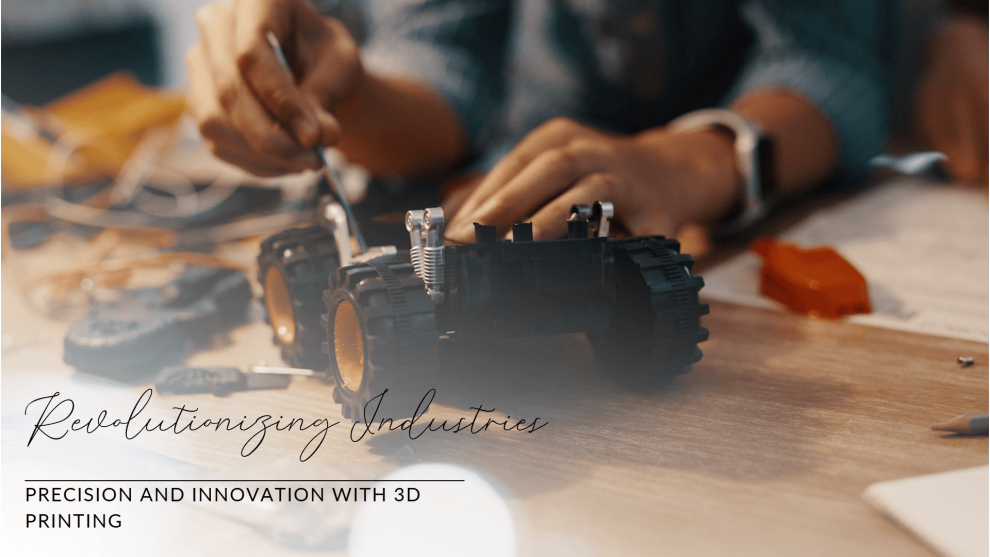3D printing, also known as additive manufacturing, has emerged as a transformative technology, enabling the creation of three-dimensional objects layer by layer using digital designs. Initially perceived as an expensive and niche technology, advancements in technology and cost reductions have made 3D printing a viable and profitable business option across various industries.
How 3D Printing Works
At its core, 3D printing translates digital designs into physical objects by depositing material layer by layer. It employs materials like plastics, metals, ceramics, and even bio-materials, depending on the application. This approach eliminates waste, allows for intricate designs, and significantly reduces the time required for production.
Applications of 3D Printing in Various Industries
1. Healthcare and Medicine
- Prosthetics and Implants: Customized prosthetics and dental implants are made with precision to suit individual patients.
- Surgical Tools: 3D printing produces lightweight and sterilizable surgical tools.
- Bioprinting: Research into 3D-printed tissues and organs is advancing, holding the potential to revolutionize transplant medicine.
2. Automotive Industry
- Rapid Prototyping: Automotive companies use 3D printing to create prototypes for design validation.
- Spare Parts: Custom and discontinued parts can be manufactured on demand, reducing inventory costs.
3. Aerospace and Defense
- Lightweight Components: 3D printing allows for the creation of lightweight yet durable components, improving fuel efficiency.
- Complex Designs: Aircraft and spacecraft benefit from intricate designs that traditional manufacturing cannot achieve.
4. Construction
- 3D-Printed Buildings: Entire homes and buildings can now be 3D-printed, reducing construction costs and time.
- Custom Architectural Elements: Complex shapes and structures can be produced efficiently.
5. Consumer Goods
- Customized Products: From jewelry to fashion accessories, 3D printing caters to individual preferences.
- Functional Prototypes: Businesses can quickly produce and test product designs before mass production.
6. Education and Research
- Learning Tools: Educational institutions use 3D printing to create models for science and engineering studies.
- Innovative Research: Universities employ 3D printing for groundbreaking projects in materials science and technology.
7. Food Industry
- Edible Creations: Specialized 3D printers can produce intricate food items, including chocolates and desserts.
- Customized Nutrition: Research is ongoing into personalized 3D-printed meals based on dietary needs.
8. Manufacturing
- Tooling and Fixtures: Factories use 3D printing to create custom tools and fixtures.
- On-Demand Production: Enables manufacturing of small batches without large-scale investment.
Advantages of 3D Printing
- Cost Efficiency: Reduces material waste and production costs for small batches.
- Customization: Allows for the creation of tailor-made products.
- Speed: Accelerates prototyping and reduces time-to-market.
- Sustainability: Eco-friendly due to minimal waste generation.
Starting a 3D Printing Business
To start a 3D printing business, the key steps are:
- Purchase a Printer: Choose a printer based on the materials and specifications suited to your target industry.
- Setup: Install the printer and ensure you have the necessary software and design tools.
- Explore Industries: Identify the sectors you want to cater to, such as healthcare, manufacturing, or consumer goods.
- Offer Services: Provide services like prototyping, custom product design, or batch manufacturing.
The Future of 3D Printing
The potential for 3D printing is vast, with advancements in materials, precision, and speed continuously expanding its capabilities. Industries are exploring ways to integrate 3D printing into their supply chains, making it a cornerstone of modern manufacturing.
With its transformative impact on production processes, cost efficiency, and customization, 3D printing is not just a business idea; it is a gateway to innovation and industrial growth. Whether in healthcare, construction, or consumer goods, 3D printing is shaping the future of how we create and build.












Add Comment